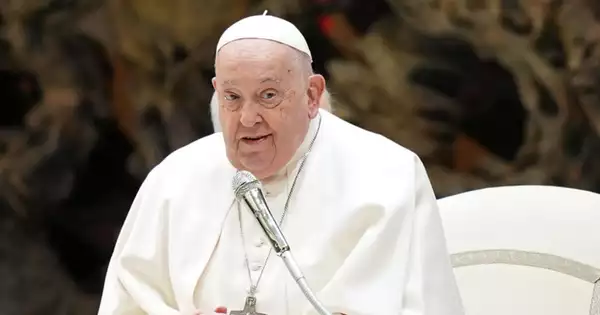Pope Francis has shown an “initial, slight insufficiency” in his kidney function, the Vatican said on Sunday. Pope has been in hospital since February 14. The 88 year old is struggling with double pneumonia.
“The condition of the Holy Father remains critical, but since yesterday evening, he has not experienced any further respiratory crises. He received two units of concentrated red blood cells with beneficial effects, and his hemoglobin levels have risen. The thrombocytopenia remains stable; however, some blood tests show early, mild renal insufficiency, which is currently under control. High-flow oxygen therapy continues through nasal cannulas. The Holy Father remains alert and well-oriented,” the Vatican released the medical update on Pope Francis adding that he had not experienced any more respiratory crises.

ഫ്രാൻസിസ് മാർപാപ്പ
He is receiving high-flow oxygen therapy
High-flow oxygen therapy is an advanced respiratory support system that delivers heated, humidified oxygen at high flow rates through a nasal cannula. Unlike conventional oxygen therapy, which provides limited oxygen flow, this can deliver up to 60 liters per minute, ensuring better oxygenation and respiratory support. The therapy is widely used for patients with respiratory distress, chronic obstructive pulmonary disease (COPD), and pneumonia.
This therapy is particularly beneficial for patients who have difficulty tolerating continuous positive airway pressure (CPAP) or non-invasive ventilation (NIV). It is commonly used in hospitals, emergency settings, and intensive care units.
High-flow oxygen therapy improves oxygen delivery by reducing dead space in the lungs, maintaining positive airway pressure, and enhancing secretion clearance. The humidified oxygen prevents airway dryness and irritation, making it more comfortable than traditional methods. It also helps reduce breathing effort and improves gas exchange, thereby lowering the need for invasive mechanical ventilation in many cases.
